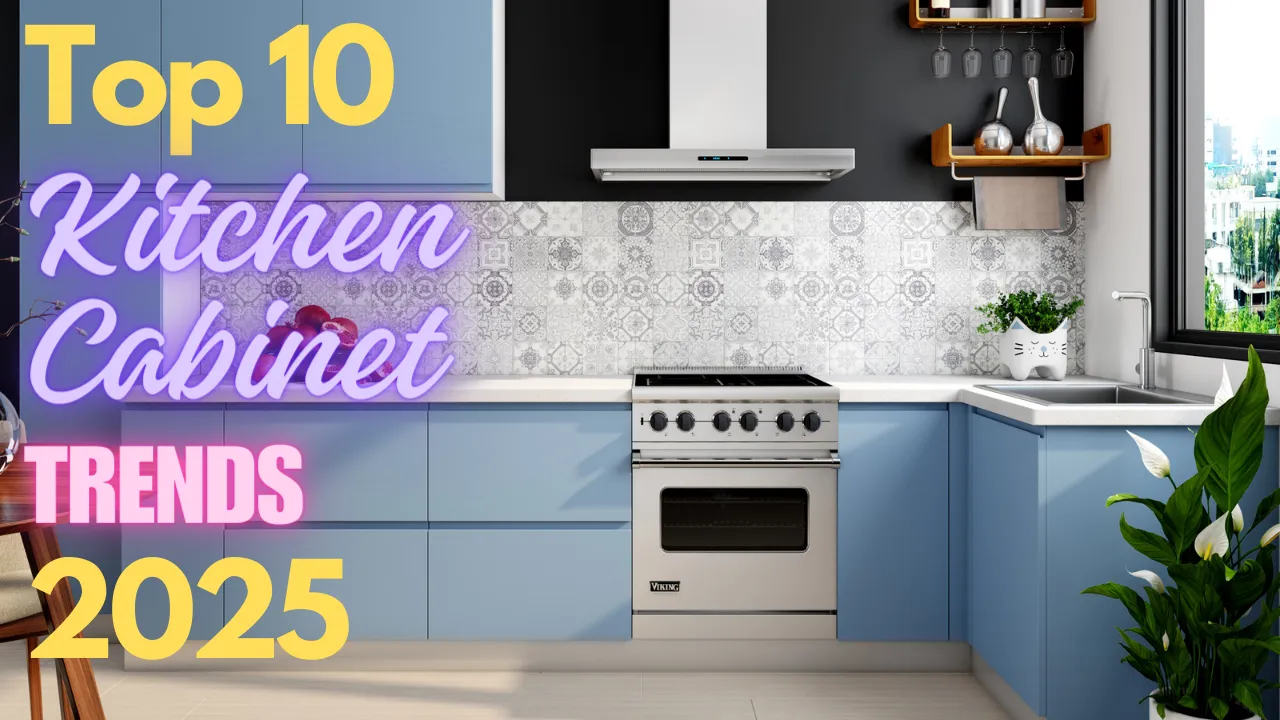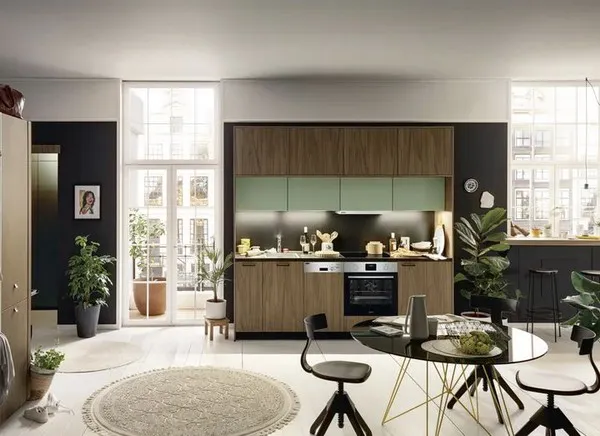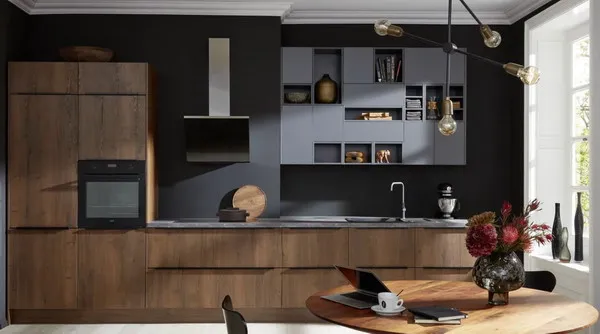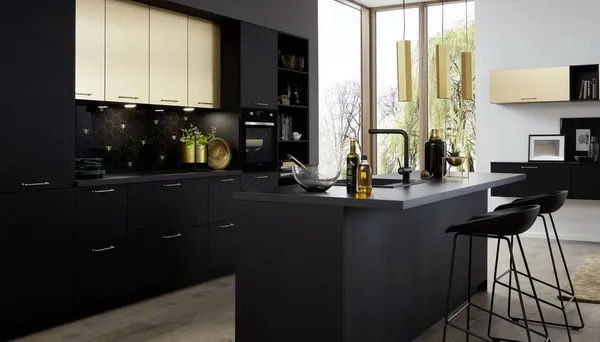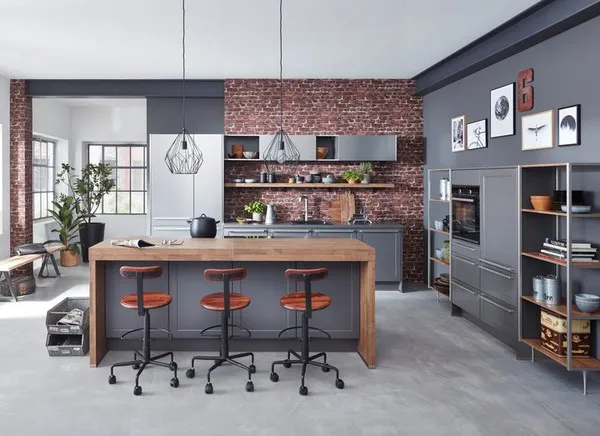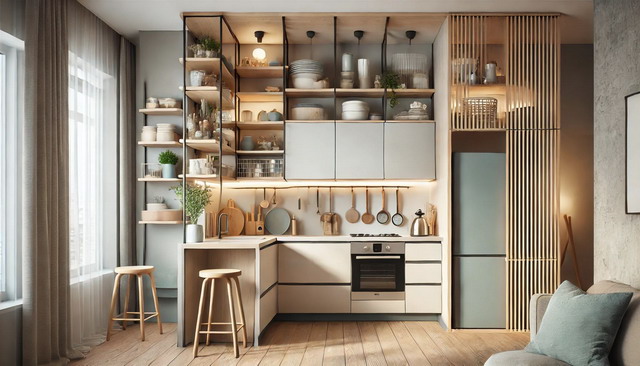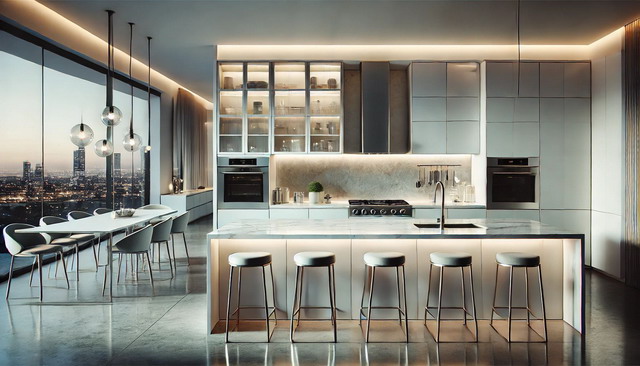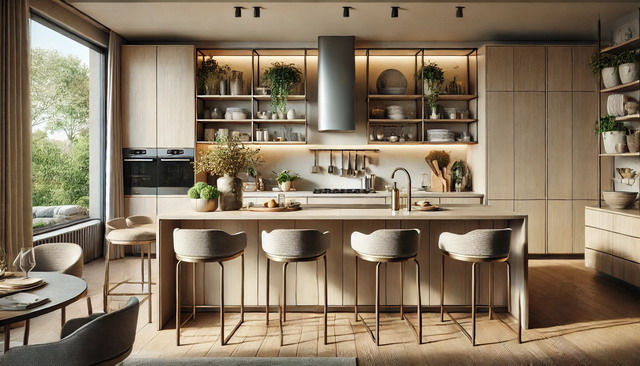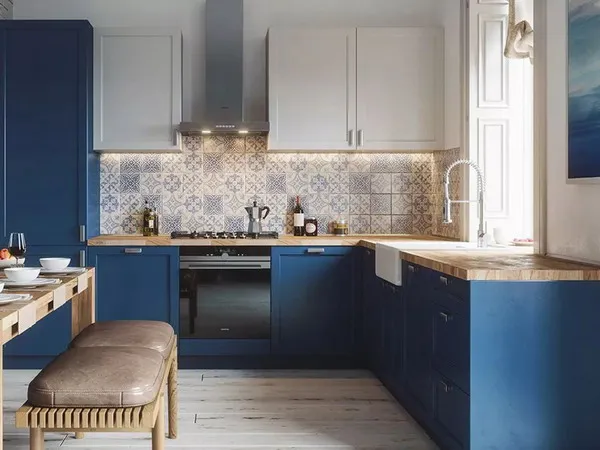Top 10 Kitchen Cabinet Trends for 2025: What to Expect in Design and Functionality
Last Updated on July 31, 2024 by Mutiara
As kitchen design continues to evolve, 2025 is set to showcase innovative cabinet trends that blend functionality with style. The top trends include a focus on sustainable materials, intelligent designs, and an aesthetic appeal that reflects personal tastes. Homeowners are increasingly seeking cabinets that not only enhance the beauty of their kitchens but also offer practical solutions to everyday cooking and living.
Emerging trends emphasize customization, allowing individuals to design spaces that truly reflect their lifestyles. From ergonomic features that improve ease of use to advancements in smart kitchen technology, the cabinets of 2025 are crafted to meet modern demands without sacrificing design. This unique interplay of form and function highlights the significance of cabinets in creating inviting and efficient kitchen environments.
Staying informed about these trends can empower homeowners to make enlightened choices for their kitchen remodels or upgrades. By embracing the latest in cabinetry, they can achieve a culinary space that embodies both aesthetic appeal and practical innovation.
Key Takeaways
- Upcoming trends prioritize sustainability and eco-friendly materials in cabinet design.
- Customization offers unique solutions tailored to individual preferences and needs.
- Smart technology enhances cabinet functionality, improving overall kitchen efficiency.
Evolving Aesthetics
The aesthetics of kitchen cabinets are changing significantly in 2025. Homeowners are embracing bolder colors, innovative finishes, and a blend of natural elements with modern design. Here are some of the key trends reflecting this evolution.
Bold Color Choices and Two-Tone Cabinets
Bold hues are making a remarkable comeback in kitchen cabinet design. Rich colors like deep greens, burnt reds, and even vibrant blues are being favored. These choices add personality and depth to the kitchen space.
Two-tone cabinets are also trending, allowing for a striking contrast. For instance, pairing a darker base cabinet with lighter upper cabinets creates visual interest. This approach not only highlights different cabinet styles but also enhances the room’s overall appeal.
Natural Wood and Modern Rustic Designs
Natural wood continues to hold a prominent place in kitchen cabinet trends. Rich, warm wood tones, such as walnut and cherry, bring a timeless elegance to the kitchen. These options can complement various design styles, offering versatility and warmth.
Modern rustic designs incorporate these natural woods with contemporary elements. For example, combining distressed finishes with sleek lines helps to create a sophisticated yet inviting atmosphere. This trend resonates with those who appreciate authenticity and craftsmanship in their home design.
High-Gloss and Matte Finish Options
Finish choices are also evolving, with high-gloss and matte cabinets gaining popularity. High-gloss finishes reflect light beautifully, making spaces feel larger and more open. This shiny surface can enhance bold colors, adding to the overall vibrancy of the kitchen.
Conversely, matte finishes provide a soft, understated look. They are particularly popular among those seeking a modern aesthetic without the reflectiveness of high-gloss. Both options cater to different tastes while making a strong visual statement in any kitchen.
Functional Innovations
Innovations in kitchen cabinet design for 2025 focus on enhancing functionality and efficiency. Smart storage solutions, multi-functional designs, and updated hardware are shaping modern kitchens.
Smart Storage and Multi-Functional Designs
Innovative smart storage solutions are essential for maximizing space in modern kitchens. Cabinets equipped with pull-out shelves, hidden compartments, and vertical dividers allow for better organization. These features cater to varying kitchen sizes, making them ideal for small spaces.
Multi-functional cabinet designs include islands that incorporate seating or additional storage. This versatility helps optimize workflows while maintaining aesthetic appeal. For example, some cabinets may feature integrated wine racks or dedicated spice drawers, marrying style with practicality. These advancements ensure that every inch of space is utilized effectively.
Concealed Appliances and Integrated Lighting
Concealed appliances are becoming a staple in kitchen cabinet trends for 2025. Dishwashers, microwaves, and even refrigerators can be hidden behind cabinetry, creating a clean, seamless look. This design choice enhances the kitchen’s visual appeal while ensuring that appliances remain accessible.
Integrated lighting is also vital in modern kitchen designs. LED strips and recessed lighting within cabinets illuminate spaces while highlighting textures and colors. This functionality not only improves visibility but also adds ambiance. Together, concealed appliances and integrated lighting contribute to a sophisticated, uncluttered environment.
Handleless Cabinets and Soft-Close Mechanisms
Handleless kitchen cabinet designs are gaining popularity for their sleek and modern appearance. This style emphasizes clean lines and simplicity, providing a minimalist aesthetic. The absence of handles allows for a surprising sense of openness in the kitchen.
Soft-close mechanisms add another layer of convenience. These features prevent cabinet doors from slamming shut, ensuring a quiet and gentle closure. Additionally, soft-close drawers offer smoother access and increased longevity. This combination of handleless designs and advanced hardware makes for a refined and functional kitchen experience.
Sustainability and Materials
Sustainability is becoming a critical factor in kitchen design, particularly for cabinets. The focus is on using eco-friendly materials and innovative designs that meet both aesthetic and environmental standards.
Eco-Friendly and Sustainable Cabinet Materials
Homeowners increasingly prioritize sustainable kitchen cabinet materials for 2025. Popular eco-friendly options include bamboo, reclaimed wood, and recycled materials. Bamboo is particularly valued for its rapid growth and renewability, making it a top choice for environmentally conscious designs.
Reclaimed wood offers a unique character while reducing the demand for new lumber. Additionally, using low-VOC finishes helps minimize indoor air pollution, enhancing the home’s overall health.
Manufacturers are also exploring alternative materials like biocomposites, which combine natural fibers with recycled plastics. These innovations satisfy sustainability goals while ensuring durability and aesthetic appeal.
Mixed Materials and Custom Cabinetry
The trend toward mixed materials in kitchen cabinet design for 2025 allows for personalized aesthetics. Combining wood with metal or glass creates a sophisticated look that can suit various styles, from modern to rustic.
Custom cabinetry options are also gaining traction in kitchen renovations. Tailoring cabinets to fit individual spaces and preferences results in functional designs that maximize storage and usability.
Integrating unique elements such as open shelving or decorative hardware can accentuate personalized designs. Homeowners can collaborate with designers to create cabinets that reflect their tastes while adhering to sustainability principles, ensuring a balance between form and function.
Design Perspectives
The kitchen design landscape for 2025 emphasizes simplicity and functionality, showcasing minimalist trends and innovative hardware choices. Additionally, open shelving and contemporary styles are gaining momentum, allowing for more personalized expressions in kitchen aesthetics.
Minimalist Trends and Sleek Hardware
Minimalism continues to dominate kitchen cabinet designs in 2025. This approach prioritizes clean lines and uncluttered spaces, promoting a sense of calm. Cabinets often feature flat-panel designs without intricate moldings.
Sleek hardware choices complement these minimalist cabinets. Options include integrated handles or touch-to-open mechanisms, providing a seamless look. Popular materials for hardware are stainless steel and matte black, enhancing the overall elegance.
The color palette leans towards neutral shades, such as whites and grays, but bold colors like deep green and navy are emerging as accents. This stark contrast allows for an appealing focal point while maintaining the minimalist ethos.
Open Shelving and Contemporary Styles
Open shelving is a stylish element in 2025 kitchens, reflecting both form and function. This trend encourages showcasing dishes and décor, making kitchens feel more inviting and personal. It also allows for easy access to items, simplifying everyday routines.
Contemporary cabinet styles are evolving to incorporate functionality without sacrificing aesthetics. Customization is key, with various finishes and textures available. Manufacturers are offering cabinets in rich tones, such as walnut and dark oak, creating warmth against the cooler elements.
Incorporating glass doors can further enhance the open feel while protecting contents from dust. This modern approach to kitchen cabinetry transforms the space into a blend of utility and style, catering to personal tastes.
Customization and Personalization
Customization and personalization are becoming crucial elements in kitchen design for 2025. Homeowners increasingly seek cabinetry that reflects their unique style and needs.
Custom cabinetry options allow for various finishes, colors, and materials. This flexibility helps create a tailored look that can enhance the kitchen’s overall aesthetic.
Options like hand-painted finishes or textured surfaces can add depth and character. Additionally, homeowners can choose from a wide range of hardware styles, ensuring every detail aligns with their vision.
Functional designs also play a key role. Custom cabinets that include specialized features—like pull-out shelves or built-in organizers—enhance usability. This focus on functionality allows for efficient storage solutions.
Moreover, the integration of smart technologies is gaining attention. Some cabinetry now includes charging stations or built-in lighting, which improves both convenience and style.
The movement towards personalization extends to the choice of materials. Unique combinations of wood types, metals, and even sustainable materials can make a kitchen stand out.
As trends evolve, customization and personalization will remain vital. They empower homeowners to create spaces that meet their practical needs while reflecting their personal taste. Embracing these trends in kitchen cabinet design for 2025 can lead to a more enjoyable and efficient cooking environment.
Intelligent Kitchen Layouts
Intelligent kitchen layouts focus on maximizing efficiency and functionality. They incorporate modern design principles that cater to the demands of contemporary cooking.
Smart Storage Solutions are a crucial aspect. These solutions utilize every inch of available space. Examples include pull-out shelves, adjustable dividers, and concealed compartments. These designs help keep kitchens organized and clutter-free.
Zoning the Kitchen is another trend. Dividing the kitchen into specific areas for cooking, prepping, and socializing enhances workflow. Each zone serves a distinct purpose, improving overall usability.
Open Shelving is also popular. It provides easy access to frequently used items and adds a sense of openness. This layout encourages creativity and personalization in kitchen design.
Multi-functional Islands serve as versatile workspaces and gathering spots. They often include storage, seating, and even cooking areas. This blend of functions makes them indispensable in modern kitchens.
Integration of Technology plays a vital role. Appliances can be seamlessly integrated into cabinetry, providing a sleek appearance. Smart systems control lighting and appliances, enabling convenience at the touch of a button.
As kitchen design evolves, these intelligent layouts are becoming essential. They respond to the growing need for both style and practicality in everyday living. Such innovations ensure that kitchens remain functional and inviting spaces.
Merging Function with Aesthetics
Modern kitchen design in 2025 emphasizes the importance of functionality paired with aesthetic appeal. Homeowners seek cabinets that not only look great but also serve multiple purposes.
Multi-functional kitchen cabinets are gaining popularity, especially in small spaces. These designs maximize utility without sacrificing style.
Key features include:
- Pull-out shelves: Enhance accessibility while keeping organized.
- Integrated appliances: Such as wine coolers or microwave drawers, maintain a sleek appearance.
- Hidden storage: Areas like toe-kicks and islands provide extra space without clutter.
Color and material choices play a significant role in this trend. Rich colors like deep green or burnt ceramic red offer a contemporary feel. Additionally, finishes in matte or high gloss can elevate a kitchen’s overall design.
Cabinet styles are evolving. Minimalist designs with clean lines are favored. This approach helps create an open and inviting atmosphere.
Embracing sustainable materials is also essential. Eco-friendly wood options contribute to a more responsible kitchen environment without compromising on style.
The combination of these elements reflects a thoughtful balance between form and function. Homeowners in 2025 will continue to prioritize kitchens that are both beautiful and practical, making the most of their space.
Ergonomics and Ease of Use
In 2025, ergonomic design plays a crucial role in kitchen cabinet trends. Handleless kitchen cabinet designs offer a sleek and modern look while enhancing accessibility. Without protruding handles, they allow for easy cleaning and minimize the risk of catching clothing or bags.
Soft-close mechanisms are another key feature, ensuring that cabinet doors close gently and silently. This functionality not only improves ease of use but also enhances safety, preventing fingers from being pinched.
The height of cabinets is also important. Installing cabinets at a comfortable height makes it easier for users to access items without straining. It’s essential to find a balance between aesthetics and usability in any kitchen design.
Drawer organization systems contribute to ergonomics. Deep drawers with dividers effectively store pots, pans, and utensils, allowing for easy access. This organization reduces the time spent searching for items, making cooking more efficient.
Lighting inside cabinets can further improve usability. Integrated LED lights help illuminate the contents, making it easier to find what is needed quickly.
Incorporating these trends will result in kitchens that are not only visually appealing but also tailored for functionality, ensuring a better user experience. Ergonomics in kitchen design is about creating spaces that promote efficiency and comfort while maintaining style.
Optimizing for Small Spaces
Maximizing space is crucial for small kitchens in 2025. Multi-functional kitchen cabinet designs provide practical solutions. These cabinets often include features that allow for versatile usage.
Key Features of Multi-Functional Cabinets:
- Pull-out shelves: These make accessing items stored in the back easy.
- Integrated appliances: Built-in designs can save space and reduce clutter.
- Drawer organizers: These optimize storage for utensils and pots.
Cap cabinets with sliding doors or bi-fold designs can create a seamless flow, enhancing accessibility. The use of open shelving helps to display items while reducing hardware clutter.
Color Choices:
Light colors can make a small space feel larger. Whites, soft grays, or pastels can brighten the room. A two-tone scheme can add visual interest while keeping it spacious.
Design Strategies:
- Vertical storage: Tall cabinets draw the eye upward, making the space feel taller.
- Corner cabinets: Utilize corner spaces with lazy Susans or pull-out designs.
Incorporating these elements into small kitchen designs can enhance functionality while maintaining style. Small spaces require smart solutions that blend practicality with aesthetics.
Advancements in Cabinet Technology
Advancements in cabinet technology are transforming kitchen design. One notable trend for 2025 is integrated lighting. This feature enhances both functionality and aesthetics within the kitchen.
Integrated Lighting Benefits:
- Improved Visibility: Task lighting integrated into cabinets illuminates countertops and work areas, aiding cooking and food preparation.
- Ambient Glow: Under-cabinet lights can create a warm, inviting atmosphere, making kitchens more enjoyable spaces.
- Energy Efficiency: LED lights are commonly used for their durability and energy-saving properties.
Another innovation is smart cabinetry. This technology allows users to control and monitor cabinets remotely. Features include:
- Automatic Closing Mechanisms: Cabinets can close softly and quietly, enhancing ease of use.
- Sensor Activation: Lights may turn on automatically when the cabinet doors open.
Flexibility and Customization are also significant advancements. Modular cabinetry systems allow homeowners to adjust their kitchen layouts easily. These systems can adapt to changing needs over time.
Sustainable Materials have gained attention as well. Manufacturers are increasingly using eco-friendly materials that are both stylish and environmentally responsible. This shift reflects a growing consumer preference for sustainable living.
The integration of technology into kitchen cabinets creates a modern, efficient environment that meets contemporary lifestyles.
Conclusion
The kitchen cabinet trends for 2025 showcase a blend of innovation and timeless design. Homeowners and designers alike are leaning towards personalized and functional solutions that enhance the overall kitchen experience.
Key trends to note include:
- Color Variety: Rich shades like olive green are taking center stage, offering warmth and earthiness.
- Sustainable Materials: Eco-friendly options are becoming increasingly popular, aligning with a growing emphasis on sustainability.
- Smart Storage Solutions: Cabinets with integrated technology and innovative storage systems cater to enhanced convenience.
While aesthetics play a crucial role, functionality remains paramount. The focus on designs that maximize space and utility will guide many choices.
As kitchens evolve, these trends will continue to shape how spaces are created and experienced. Emphasizing quality and personalization allows for a unique blend tailored to individual preferences.
Investing in these trends can significantly enhance both the beauty and practicality of kitchen spaces in the coming years. Adapting to emerging styles while maintaining personal touches ensures a modern yet timeless kitchen.
Frequently Asked Questions
The kitchen cabinet trends for 2025 feature innovative colors, materials, and designs that cater to modern needs. Sustainability, space efficiency, and technology integration are focal points that promise to shape the future of kitchen cabinetry.
What are the emerging kitchen cabinet color trends anticipated for 2025?
In 2025, kitchen cabinet colors are expected to lean towards bold hues like deep greens and navy blues, along with warm neutrals and earthy tones. These colors create a striking contrast against lighter countertops and can enhance the overall aesthetic of kitchen spaces.
How might kitchen cabinet designs evolve for small spaces in 2025?
Designs for kitchen cabinets in small spaces will prioritize functionality and space-saving features. Custom cabinetry with integrated shelving and multi-purpose elements will become more prevalent, allowing for efficient use of limited square footage while maintaining style.
Which materials are expected to be popular for kitchen cabinets in 2025?
Sustainable materials such as bamboo, reclaimed wood, and recycled metals will gain popularity in 2025. These materials not only provide durability but also align with the increasing consumer demand for eco-friendly products in home design.
What innovations in storage and organization are forecasted for 2025 kitchen cabinetry?
Innovative storage solutions like pull-out drawers, lazy Susans, and modular shelving will be integral to kitchen cabinetry. These features will enhance organization and accessibility while maximizing use of available space.
How will sustainability influence kitchen cabinet trends in 2025?
Sustainability will significantly impact kitchen cabinet trends through the use of eco-friendly materials and energy-efficient manufacturing processes. Consumers will increasingly seek out products that reduce environmental footprint while offering aesthetic appeal.
What kitchen cabinet features are expected to cater to technology integration in 2025?
In 2025, kitchen cabinets are likely to incorporate smart technology features such as built-in charging stations and smart lighting. These innovations will enhance convenience and provide modern functionality to the kitchen environment.
